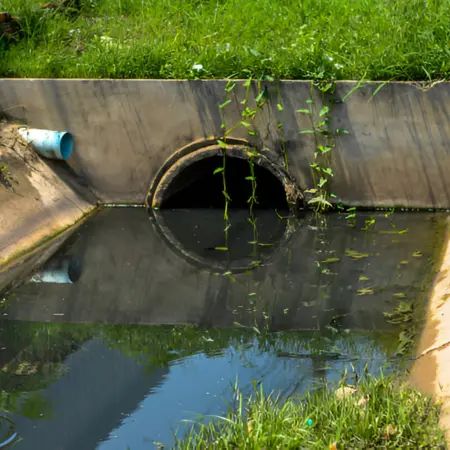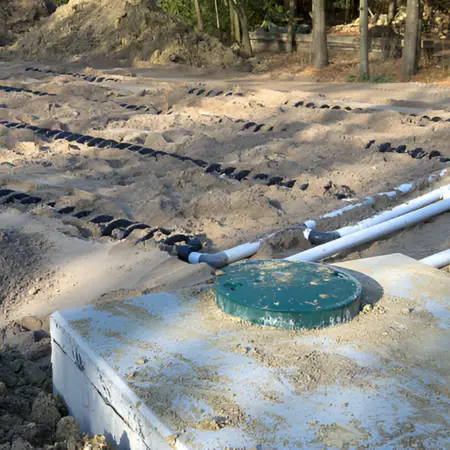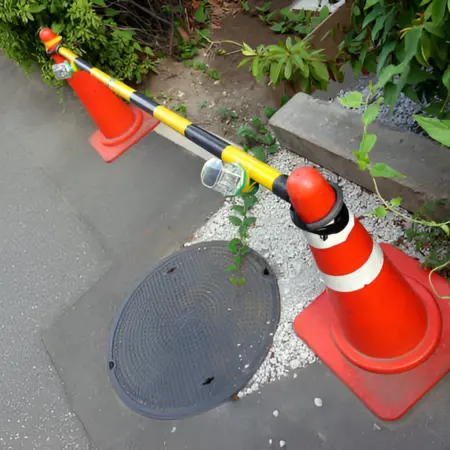Installing a septic drain field is important in setting up your septic system.
It helps remove and treat wastewater from your septic tank.
With these simple steps, you can correctly set up your drain field and ensure it works well.
Key Takeaways
- Trenches should be 18-30 inches deep and 6-8 feet apart.
- The distribution box evenly sends wastewater to the pipes in the drain field.
- Ensure the stones are clean and don’t have big pieces that could block the pipes.
- Don’t use heavy equipment that could damage the pipes.
- You often need local permits before installing a septic drain field.
- Use site analysis and soil tests to choose where to place the drain field.
- Test the soil to see how well it drains and absorbs water.
Steps To Install A Septic Drain Field
Installing a septic drain field is key to setting up your septic system.
Follow these easy steps to dig trenches, lay pipes, and finish the installation.
1. Dig Out The Trenches
Start by digging trenches for your drain field.
The depth and spacing of these trenches depend on your local regulations and soil type.
Generally, trenches should be about 18-30 inches deep and spaced 6-8 feet apart.
Use a trenching machine to dig the trenches.
Make sure to wear safety gear, like gloves and goggles.
Also, be careful of any underground pipes or wires.
2. Install The Distribution Box And Pipes
Attach pipes from your septic tank to the distribution box.
The distribution box spreads wastewater equally to the pipes in the drain field.
Place pipes in the trenches, ensuring they are level and correctly spaced.
This helps wastewater flow evenly and prevents clogs.

3. Layer Stones And Sand
Spread a layer of stones and sand at the bottom of the trenches before placing the pipes.
This layer helps with drainage and supports the pipes.
Ensure the stones are clean and free of large pieces that could block the pipes.
Proper layering helps water flow easily and prevents clogs.
4. Cover The Drain Field
Cover the trenches with soil once the pipes and stones are in place.
This helps protect the pipes and ensures the drain field blends with the rest of your yard.
Leave some air space between the soil and the ground surface.
It allows proper drainage and prevents water pooling.
5. Finish The Installation
Press the soil to settle and create a stable base for the drain field.
Avoid heavy equipment that might damage the pipes.
Be careful when gardening around the drain field.
Avoid using heavy machinery or planting large trees with deep roots.
These can damage the pipes and disturb the drainage system.
Pre-Installation Preparations
Before you install a septic drain field, it’s important to prepare properly.
Here are the important pre-installation preparations you need to make:
1. Site Evaluation And Permits
Before starting, check the area where you plan to install the drain field.
Ensure it’s a suitable spot, away from buildings, trees, and water sources.
This helps ensure the system works well and meets local regulations.
You usually need to get permits from your local government before installing a septic drain field.
These permits make sure your installation meets safety and environmental standards.
2. Soil Testing And Sink In Rates
Test the soil in the area where you’ll install the drain field.
Soil testing checks if the soil is good for absorbing and draining wastewater.
Measure how quickly water soaks into the soil.
This is called the percolation rate.
It helps you understand if the soil can handle the amount of wastewater your system will produce.

3. Plan The Layout Of The Drain Field
Based on the site evaluation and soil tests, decide where to place the drain field.
Plan the layout to ensure proper water flow and avoid any issues.
Make sure there’s enough space for the trenches and pipes.
Materials Needed For Installation
Here are the materials you’ll need to install a septic drain field.
Having these materials ready will help ensure a smooth and effective installation process.
1. Piping
You’ll need pipes to carry wastewater from the septic tank to the drain field.
These pipes are usually made of durable plastic and come in different sizes.
2. Trenches
You’ll need to dig trenches for the pipes to be laid in.
These are the channels where the pipes will be placed.
Make sure the trenches are the right depth and width for your pipes.
3. Gravel (Stones)
Gravel is used to create a base under the pipes in the trenches.
It helps with drainage and keeps the pipes in place.
4. Sand
Sand is spread on the gravel to further aid drainage and prevent clogging.
5. Filter Fabric
Filter fabric is a material placed over the sand and gravel.
It keeps soil from mixing with the gravel and sand, which helps the system work better and last longer.
6. Distribution Box
The distribution box evenly spreads wastewater from the septic tank into the drain field pipes.
It helps make sure that the wastewater is distributed evenly across the field.
Common Mistakes To Avoid
Avoiding these common mistakes will help your septic drain field work properly.
This also helps it last longer.
1. Incorrect Sizing Or Layout
The septic drain field can get overloaded and fail if it is too small.
An incorrectly sized system may not handle all the wastewater, leading to issues.
Size the drain field according to how many people live in your home and how much wastewater you produce.
This helps prevent overloading and keeps the system working well.

2. Ignoring Soil Testing
Skipping soil testing can cause drainage problems because the soil might not absorb wastewater well.
This can cause a system failure.
Test the soil to check its drainage and absorption abilities.
If the soil isn’t suitable, you might need to improve it or choose a different location.
This helps ensure the system works properly.
3. Improper Sloping (Placing)
If the trenches aren’t sloped right, wastewater won’t flow evenly.
Some parts of the drain field may get too much water while others get too little.
This can cause clogs and make drainage less effective.
Check the slope of the trenches to make sure wastewater flows evenly.
Conclusion
This article tells how to install a septic drain field.
Pre-installation preps are also discussed.
Furthermore, the material required for the process is also mentioned.
